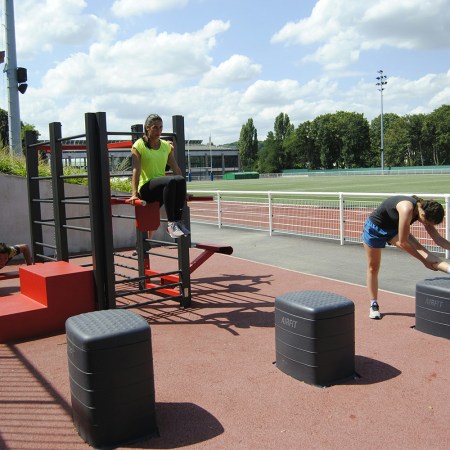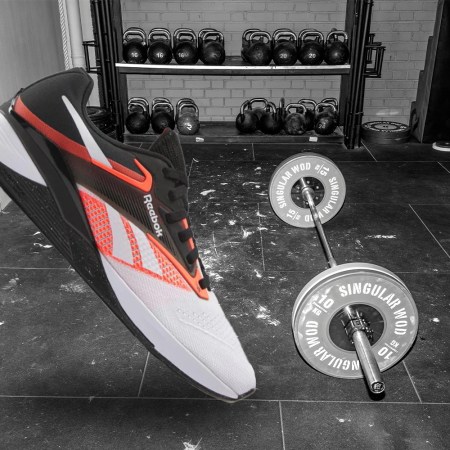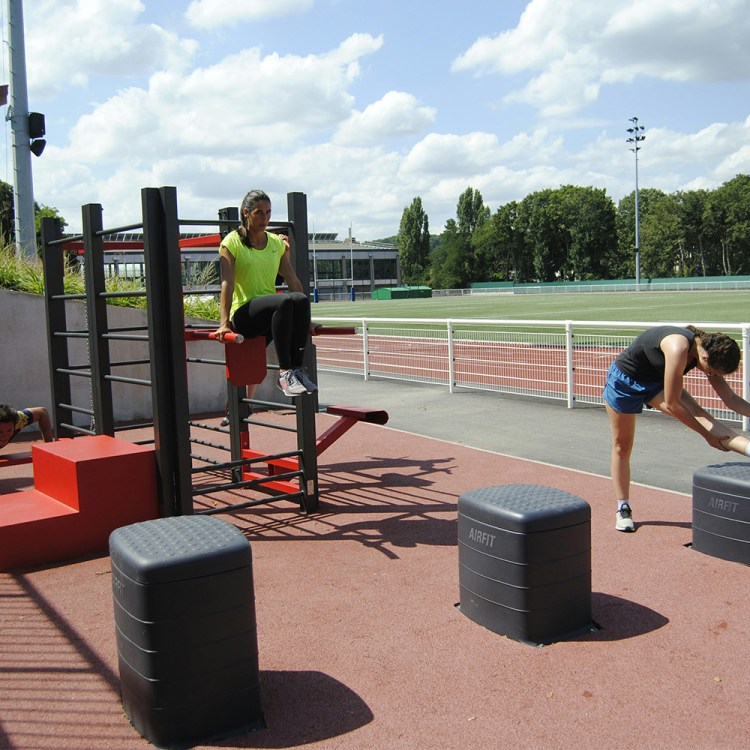There’s a claim bouncing around the online wellness-sphere that “95% of men and women never sprint over the age of 30.” It’s un-cited, and has naturally launched a litany of impassioned debates in comment sections and on Reddit. Could it be true?
Well, no, probably not. For starters, who could possibly prove it? What study (or biobank) could draw such an expansive and astonishing conclusion? It also doesn’t pass the smell test. Only 5% of adults — from the day they turn 30 until the day the die — will ever sprint after a kid, or a dog, or a departing train? No way.
At the same time, the line is a pretty compelling CTA for high-intensity exercise. It’s likely that a fair share of 30-and-older adults will have to wrack their brains to remember the very last time they went all out. But when you’re younger — playing at recess, on a sports team, or just dealing with a case of the zoomies — sprinting happens all the time. It’s a part of life.
All validity of the concept aside, we’d contend it’s one part of life you should work hard to hold close. Sprinting is really good for you (shocker). And it’s something worth preserving past your 60th birthday; you might as well add “sprint” (plain and simple) to your centenarian decathlon. We explain exactly how to do so, with this middle-aged sprinting guide.
The Benefits of “Mildly Uncomfortable” Endurance Workouts
Learning to train at threshold could make all the differenceWhy Sprinting Is Good for You
Sprinting hurts. It sucks. Hardo coaches use it as a punishment for a reason. Still, its temporary agony can lead to lifelong benefits. Regular sprint intervals (in the 30-second range, specifically) strengthen the heart, optimize your blood sugar and cholesterol, boost your VO2max, increase your power output and are excellent at cutting your visceral (belly) fat — the cancer-causing fat we have to be really careful about.
It’s the unicorn form of exercise that (a) gets your heart pumping for an extended period of time, while (b) toning and building muscle mass. Sprinting fires your fast-twitch fibers, our short-burst muscular network that’s more Lambo than Volvo. Once we stop sprinting, though — and spend most of our time on the couch — the “Lambo” is pretty much stuck in the garage, covered in a dusty hood for perpetuity. Where’s the fun in that?
It Doesn’t Get Any Easier. It’s True.
Your brain may have always rejected sprints. Then, as you get older, your body has no interest in those intense bursts, either. Muscle elasticity erodes as we age. Testosterone levels drop at a rate of about 1% per year after the age of 30. (A higher T count provides an irrefutable athletic edge in sprinting.) Metabolism slows down, too, in part because you’re losing muscle mass, which leads to weight gain, which…will probably discourage you from attempting to light up the local track. Besides, your back probably hurts.
How to Hit Max Speed Again
And yet — it can be done. The key to jumpstarting sprint training, ironically, is to approach it slowly and methodically. To keep an open mind. The definition of sprinting you’re thinking of (repeats on a track or football field) is too narrow and boring. You can “sprint” on an assault bike. You can hustle up a set of stairs. You can hammer out a HIIT session that includes mountain climbers, jump roping and box jumps.
These aren’t all perfect one-to-one comparisons, but getting in the habit of shorter, short-burst workouts could be the refreshing (and time-saving) shock that your wellness routine needs…while retraining your body to “go all out” again in the process.
Still, regular old sprinting is pretty amazing, too. Trainers like to talk about endorphin release (while vanguard studies tend to focus more on “hope molecules”), but you don’t need studies or a lecture to appreciate that using your body to its full potential feels really goddamn good. Done right, sprinting is one of the coolest things you do. So why let yourself lose it? Get started with this beginner’s session:
A Sample Workout
- Warm-up: Begin with a 10-minute light jog followed by dynamic stretches like leg swings, high knees and butt kicks.
- Acceleration drills: 4 x 50 meters with a gradual increase in speed. Start at 50% effort and increase by 10% each time. For reference, 50% of your heart rate is still pretty light activity. (It would roughly correspond to a “5” on the Borg Rate of Perceived Exertion scale.) Let yourself build; if you don’t have it on that day, don’t force it. Auto-regulate.
- Sprint intervals: 6 x 100 meters at 80-90% max effort, with two minutes of rest between each. This should be difficult. Your heart rate will be solidly in Zone 5 at the close of each effort. Make sure to keep moving during the rest period! You don’t want to lock up.
- Cooldown: A 10-minute easy jog, followed by static stretching. Notice that we’re keeping the static stretching for after the workout. Target the quads, hamstrings, calves and hip flexors.
Mistakes to Steer Clear Of
- Skipping the warm-up: As you age, the muscles need a longer time to prepare for intense activity. Skipping or rushing the warm-up can lead to injuries.
- Overtraining: Listen to your body. Sprinting is demanding, and training too often — or without adequate recovery — will sabotage any shot of progress and increase your injury risk.
- Ignoring form: Prioritize technique. Knees high, upper body bent a little forward, arms pumping parallel. Make good contact with the ground, and over time, work to improve your cadence.
Whether you’re looking to get into shape, or just get out of a funk, The Charge has got you covered. Sign up for our new wellness newsletter today.















